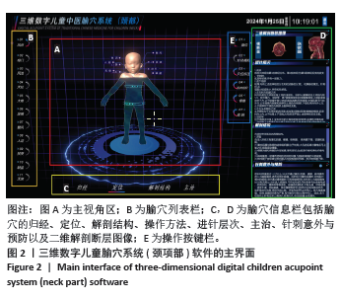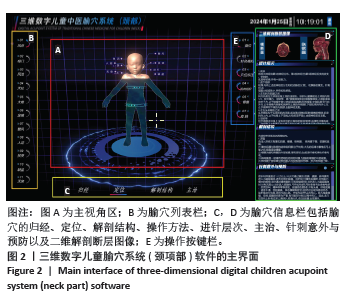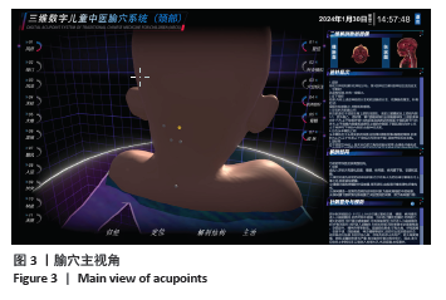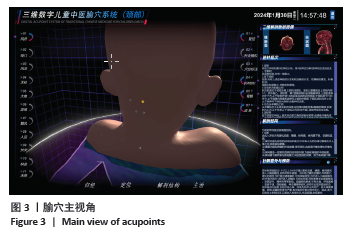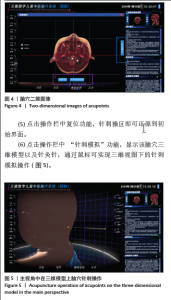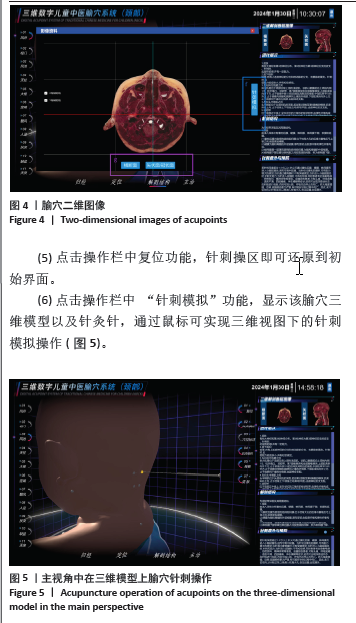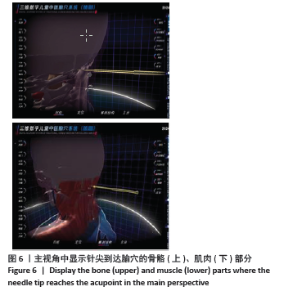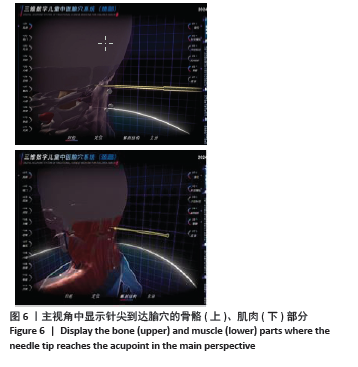[1] 张绍祥,刘正津,谭立文,等.首例中国女性数字化可视人体数据集采集与可视化研究[J].第三军医大学学报,2003,25(5):394-396.
[2] 吴毅,宋艳,方彬吉,等.基于中国数字化人体的虚拟解剖学系统的建立[J].解剖学杂志,2017,40(1):44-46+125.
[3] 刘光久.头颈项部数字化三维断面解剖及可视化研究[D].重庆:第三军医大学,2007.
[4] SPITZER VM, WHITLOCK DG. The Visible Human Dataset: the anatomical platform for human simulation. Anat Rec. 1998;253(2): 49-57.
[5] SPITZER V, ACKERMAN MJ, SCHERZINGER AL, et al . The visible human male: a technical report. J Am Med Inform Assoc. 1996;3(2):118-130.
[6] SPITZER VM, SCHERZINGER AL. Virtual anatomy: an anatomist’s playground. Clin Anat. 2006;19(3):192-203.
[7] KAPAKIN S, DEMIRYUREK D. The reproduction accuracy for stereolithographic model of the thyroid gland derived from the visible human dataset. Saudi Med J. 2009;30(7):887-892.
[8] ROBINSON RJ, RUSSO J, DOOLITTLE RL. 3D airway reconstruction using visible human data set and human casts with comparison to morphometric data. Anat Rec (Hoboken). 2009;292(7):1028-1044.
[9] KETCHA MD, DE SILVA T, UNERI A, et al. Multi-stage 3D-2D registration for correction of anatomical deformation in image-guided spine surgery. Phys Med Biol. 2017;62(11):4604-4622.
[10] 李梓瑜,李琨,郭燕,等.数字儿童颅底及颈部可视化模型建立研究[J].中国临床解剖 学杂志,2022,40(6):639-643.
[11] 宋浩宇,熊峰,朱丽媛,等.基于断层解剖及可视化重建儿童肾的解剖结构[J].解剖学杂志,2023,46(4);324-327.
[12] 王鹏,张丁元,张柳,等.基于断层解剖及可视化研究对儿童下呼吸道及肺的三维重建[J].解剖学杂志,2023,46(1):1-3.
[13] 王鹏,张岩淞, 张丁元,等.儿童肝超薄铣削断层解剖及可视化重建[J]. 解剖学杂志,2023,46(3):230-233.
[14] 高学全,潘建明,刘建卫,等.数字化虚拟人体穴位三维重建数据库的建立与应用[J].安徽中医学院学报,2009,28(6):39-42.
[15] 刘红菊,赵静,严振国,等.基于虚拟人技术的风池穴可视化研究[J].针刺研究,2004,29(4):282-285.
[16] 邵水金,严振国,庄天戈,等.基于VOKEL-MAN平台的危险穴位可视化研究[J].上海针灸杂志,2007,26(6):34-36.
[17] 刘延祥,严振国,郭义,等.环跳穴进针角度和深度的三维可视化研究[J].中国针灸,2012,32(10):897-900.
[18] 姜雨晨,姜俊,王福波,等.数字虚拟人体上针刺手法学的VR再现[J].中国组织工程研究,2016,20(44):6643-6648.
[19] 徐雪彬,王星,李琨,等.中国学龄前男童连续薄层标本数据集建立及可视化[J].解剖学报,2020,51(6):924-928.
[20] 黄龙祥,赵京生,韩钟,等.腧穴名称与定位(GB/T12346-2006)[M]. 北京: 中国中医科学院针灸研究所,2006.
[21] 黄龙祥,赵京生,武晓东,等.经穴名称与定位(GB/T 12346-2021)[M]. 北京: 中国中医科学院针灸研究所,2021.
[22] 沈雪勇,刘存志.经络腧穴学[M]. 北京:中国中医药出版社,2021.
[23] 邵水金. 腧穴解剖学[M]. 北京:中国中医药出版社,2023.
[24] 朱政,胡泽楷,杨旭明,等.基于WebGL技术的三维动态针灸头部穴位诊疗学习系统的研发与应用[J].中国中医药现代远程教育2021,19(16):21-24.
[25] 吴子建.“以学生为中心”的《经络腧穴学》教育设计[J].陕西中医药大学学报,2021,44(2):115-117.
[26] 孙忠人,田洪昭,尹洪娜,等.基于“医工结合”探讨针灸发展演变[J].中华中医药杂志,2019,34(3):1117-1119.
[27] 毛烨.基于OpenGL虚拟针灸的三维仿真设计与实现[D].成都:电子科技大学,2012.
[28] 谭红春,杜炜.基于人体经络三维动画教学的研究与设计[J].贵阳中医学院学报,2019,41(2):82-87.
[29] 张文元,李晓旭,谈国新,等.针灸铜人三维可视化研究与应用[J].计算机应用研究,2019,36(7):2054-2058,2064.
[30] 阚红星,陈光恩,徐伟,等.基于Unity3D的中医针灸教学训练测评系统设计电脑知识与技术[J].电脑知识与技术,2020,16(1): 40-41.
[31] 蔡晓雯,黄泳,曲姗姗,等.虚拟现实技术在中医针灸教学中的运用[J].河北中医,2017,39(11):1758-1760.
[32] 许安萍,杨星月,张宇沁,等.虚拟数字人教学平台在“新医科”针灸人才培养及评价中的应用探索[J].中国医学教育技术,2023, 37(3):229-334.
[33] 宣雨松.Unity3D游戏开发[M].北京:人民邮电出版社,2012:1-2.
[34] 张斯琦,周亮,武丹,等.东贵荣教授针灸治疗儿童小脑性共济失调经验[J].陕西中医药大学学报,2023,46(3):51-54.
[35] 刘振寰.头针为主治疗小儿脑瘫210例临床观察[J].中国针灸杂志, 1999,19(11):651.
[36] 许丽,魏理珍,陈远青,等.小儿肌性斜颈的鉴别与中医治疗[J].中国中西医结合儿科学,2011,3(4):295-296.
[37] 孙凌蓉.针灸治疗儿童抽动症30例[J].实用中医药杂志,2015, 31(11):1041.
[38] 周倩倩,王继红,王荣荣,等 . 针灸对低度青少年近视短期效果的临床观察[J]. 中华中医药学刊,2021,39(2):211-214
[39] 宋瑶,郭建新,王娴,等.温阳通络针灸法联合推拿治疗小儿脑瘫疗效观察[J].陕西中 医,2023,44(5):655-658.
[40] 严伟,丁苗苗,宋锦萍.基于扶阳理论探析针灸干预儿童脾肾两虚型特发性矮小症的临床研究[J].南京中医药大学学报,2023,39(6): 575-579.
[41] 黄日香,韦清连,卢超凤.针灸配合贴敷对自闭症儿童语言障碍的临床观察[J].长春 中医药大学学报,2023,39(7):773-776. |
